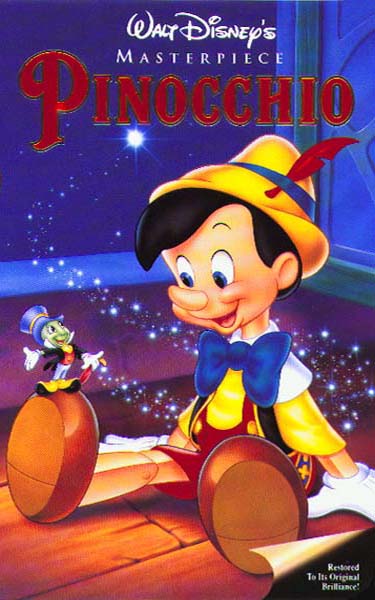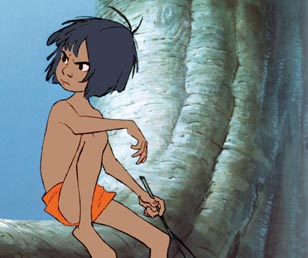I have chosen to study from the region of “Auteur” for my research project, specifically in the area of Disney animations, to discover whether the themes and issues present amongst them could be considered an auteur signature. In order to do this, I plan first to research into what being an auteur really means, and what specifically makes an auteur signature. To find this out I will read the appropriate chapters of “Studying Film”, a book by Nathan Abrams, Ian Bell and Jan Udris, as well as “The Cinema Book”, by Pam Cook, which also has chapters on the auteur theory. I will also need to watch my chosen focus film, “Beauty and the Beast”, 1991, and take notes on what the themes and issues present actually are. I will also do this with my supporting films, “Snow White and the Seven Dwarfs”, 1937, “Cinderella”, 1950, and “The Lion King”, 1994, to see if these themes and issues are repeated. I chose these films to have a mix between “fairytale” films and adventure films, as well as having a range across a wide period of time, from 1937 to 1994.
I intend to watch the second discs of special features of each of these films in order to have a better understanding of the films and their backgrounds and production, and to see the ideas behind the choices made. The directors’ commentaries of each of my films will also be very useful for these reasons. To find out more about Disney as an auteur, I will also need to read books such as “Disney Discourse: Producing the Magic Kingdom”, by Eric Smoodin, and “Media Research Techniques” , by Arthur Asa Berger, as it has a chapter surrounding Walt Disney productions. “To the Beast to the Blonde: on Fairy Tales and their Tellers” is another book that would be interesting and helpful to research into for my topic, to see more into the narrative and representations in my focus film to understand more about the themes and issues.
Reading reviews from magazines like Sight and Sound and Empire, as well as looking at online reviews will help me to see if Disney uses recurring themes due to audience expectation and demand, giving them what they want from developing a love for the previous films; or whether it is the differences between the films that the critics and audiences pick up on most.
Wednesday, 14 July 2010
Tuesday, 13 July 2010
Tuesday, 6 July 2010
Monday, 5 July 2010
Draft titles...
I've decided that I will research Disney's signatures as an auteur, using "Beauty and the Beast", 1991 as my focus film, and "Snow White", 1937, "Cinderella", 1950, and "The Lion King", 1994, as my supporting films.

- What auteur signatures are consistent through the animated productions of Disney Studios?
- What conventions, themes, issues and representations common amongst Disney animations act as auteur signatures?
- Can recurrent themes and issues found in Disney animations be considered an auteur signature?
Friday, 2 July 2010
Initial ideas
I've had a few different ideas, all involving Disney as an auteur. 
My first idea was to base my project around Disney's transition from traditional hand drawn animation, such as "Snow White and the Seven Dwarfs", 1937, to using computer generation animation in Disney-Pixar pictures such as "Finding Nemo", 2003.
to using computer generation animation in Disney-Pixar pictures such as "Finding Nemo", 2003. To find out which technique is more popular in the box office, and whether or not the technological advance in animation has altered the quality of the narratives. I also find it interesting that Disney has re-introduced the hand drawn technique into their productions, with "The Princess and the Frog", 2009, so I thought that this would be a good area to study in to.
To find out which technique is more popular in the box office, and whether or not the technological advance in animation has altered the quality of the narratives. I also find it interesting that Disney has re-introduced the hand drawn technique into their productions, with "The Princess and the Frog", 2009, so I thought that this would be a good area to study in to.
Another idea I have had was to research the representation of the "princess" character in Disney animations, as the position has changed from being nothing but a cleaner, or inferior and weak character, such as Cinderella or Snow White, to an aspirational young woman, working hard for a successful future on her own, like Tiana in "The Princess and the Frog", 2009. However at the end of all Disney fairy-tales, it is the union with the Prince that guarantees the Princesses true happiness. I could extend this idea further by not only focussing on Disney fairy-tales but other fairy-tale films such as "The Princess Bride"1987.
However at the end of all Disney fairy-tales, it is the union with the Prince that guarantees the Princesses true happiness. I could extend this idea further by not only focussing on Disney fairy-tales but other fairy-tale films such as "The Princess Bride"1987.

My third idea is to research the themes that run through Disney films, acting as a signature for it's auteur-ism. Disney protagonists are constantly recognised to have just one parent, or be orphaned entirely, from Pinocchio ("Pinocchio", 1940) , to Mowgli ("The Jungle Book", 1967
, to Mowgli ("The Jungle Book", 1967 ), to more recent characters such as Simba ("The Lion King", 1994)
), to more recent characters such as Simba ("The Lion King", 1994) , and Andy ("Toy Story 3, 2010).
, and Andy ("Toy Story 3, 2010).  Family, love and friendship are also constant themes found in Disney films, as well as "good vs evil".
Family, love and friendship are also constant themes found in Disney films, as well as "good vs evil".

My first idea was to base my project around Disney's transition from traditional hand drawn animation, such as "Snow White and the Seven Dwarfs", 1937,
 to using computer generation animation in Disney-Pixar pictures such as "Finding Nemo", 2003.
to using computer generation animation in Disney-Pixar pictures such as "Finding Nemo", 2003. To find out which technique is more popular in the box office, and whether or not the technological advance in animation has altered the quality of the narratives. I also find it interesting that Disney has re-introduced the hand drawn technique into their productions, with "The Princess and the Frog", 2009, so I thought that this would be a good area to study in to.
To find out which technique is more popular in the box office, and whether or not the technological advance in animation has altered the quality of the narratives. I also find it interesting that Disney has re-introduced the hand drawn technique into their productions, with "The Princess and the Frog", 2009, so I thought that this would be a good area to study in to. Another idea I have had was to research the representation of the "princess" character in Disney animations, as the position has changed from being nothing but a cleaner, or inferior and weak character, such as Cinderella or Snow White, to an aspirational young woman, working hard for a successful future on her own, like Tiana in "The Princess and the Frog", 2009.
 However at the end of all Disney fairy-tales, it is the union with the Prince that guarantees the Princesses true happiness. I could extend this idea further by not only focussing on Disney fairy-tales but other fairy-tale films such as "The Princess Bride"1987.
However at the end of all Disney fairy-tales, it is the union with the Prince that guarantees the Princesses true happiness. I could extend this idea further by not only focussing on Disney fairy-tales but other fairy-tale films such as "The Princess Bride"1987. 
My third idea is to research the themes that run through Disney films, acting as a signature for it's auteur-ism. Disney protagonists are constantly recognised to have just one parent, or be orphaned entirely, from Pinocchio ("Pinocchio", 1940)
 , to Mowgli ("The Jungle Book", 1967
, to Mowgli ("The Jungle Book", 1967 ), to more recent characters such as Simba ("The Lion King", 1994)
), to more recent characters such as Simba ("The Lion King", 1994) , and Andy ("Toy Story 3, 2010).
, and Andy ("Toy Story 3, 2010).  Family, love and friendship are also constant themes found in Disney films, as well as "good vs evil".
Family, love and friendship are also constant themes found in Disney films, as well as "good vs evil".
Subscribe to:
Posts (Atom)